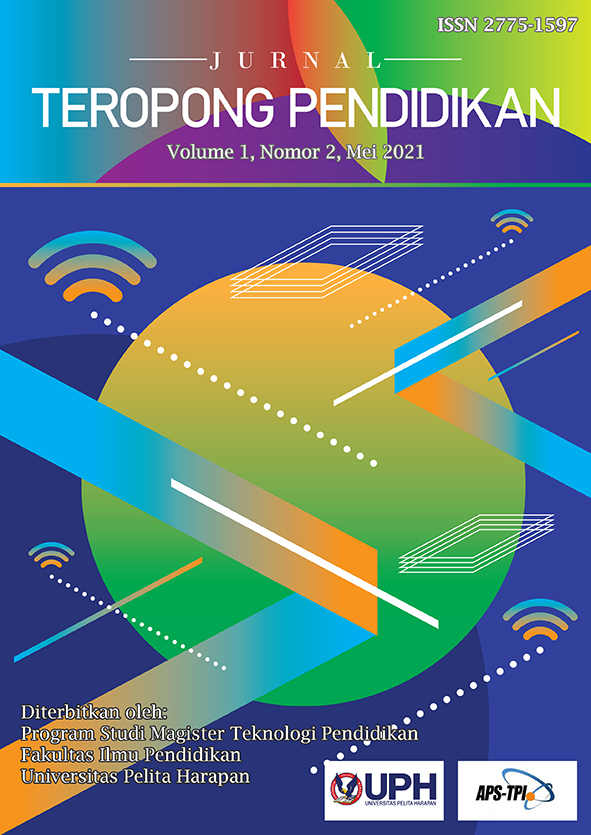MENINGKATKAN MINAT BACA, KEMAMPUAN MEMAHAMI BACAAN, DAN BERPIKIR KRITIS SISWA MELALUI PENERAPAN SUSTAINED SILENT READING (SSR) DAN READING RESPONSE [IMPROVING STUDENTS' READING INTEREST, READING COMPREHENSION, AND CRITICAL THINKING THROUGH THE IMPLEMENTATION OF SUSTAINED SILENT READING (SSR) AND READING RESPONSE]
DOI:
https://doi.org/10.19166/jtp.v1i2.3462Keywords:
Sustained Silent Reading, Reading Response, reading interest, reading comprehension, critical thinkingAbstract
Reading is one of the many skills which is taught in Indonesian language lessons. During lessons, students are usually asked to read a passage of text and answer comprehension questions. This makes reading activities less interesting. Since students are not able to find enjoyment in reading and they gain limited vocabulary. Consequently, students think that the Indonesian language is hard to master. Students’ reading interest, reading comprehension and critical thinking skills are low. This situation has urged the researcher to apply Sustained Silent Reading (SSR) and Reading Response as an alternative solution to the problem, as an act of improvement. Through the method of class action research, this research aims to describe the process of implementing Sustained Silent Reading (SSR) and Reading Response; analyse the development of students’ reading interest, reading comprehension and critical thinking skills; and also to describe the constrains during the implementation. Data has been collected with field notes, observation and scores of the students’ work using rubrics. The research consists of 3 cycles after which data was processed qualitatively and analysed descriptively. The research showed that students’ reading interest, comprehension and critical thinking skill had improved.
References
Chaffee, J. (2014). Thinking critically. Cengage Learning.
D’Angelo, E. (1971). Critical thinking in reading. Elementary English, 48(8), 946-950. http://www.jstor.org/stable/41387008
Fulps, J. S., & Young, T. A. (1991). The what, why, when, and how of reading response journal. Reading Horizons, 32(2), 109-116. https://scholarworks.wmich.edu/cgi/viewcontent.cgi?referer=https://www.google.co.id/&httpsredir=1&article=1556&context=reading_horizons
Irwan. (2018). Dinamika dan perubahan sosial pada komunitas lokal. Deepublish.
Kridalaksana, H. (1994). Kelas kata dalam Bahasa Indonesia (2nd ed.). Gramedia Pustaka Utama.
Rahim, F. (2005). Pengajaran membaca di sekolah dasar. Bumi Aksara.
Sanjaya, W. (2010). Penelitian Tindakan Kelas. Prenada Media.
Sudarsana, U. (2014). Pembinaan minat baca. Universitas Terbuka.
Wardani, I. G. A. K. (2014). Penelitian tindakan kelas. Universitas Terbuka.
Widayati, A. (2008). Penelitian tindakan kelas. Jurnal Pendidikan Akuntansi Indonesia, 6(1), 87-93. https://doi.org/10.21831/jpai.v6i1.1793
Woolley, G. (2011). Reading comprehension: Assisting children with learning difficulties. Springer. https://doi.org/10.1007/978-94-007-1174-7
Downloads
Published
Issue
Section
License
Authors who publish with this journal agree to the following terms:
1) Authors retain copyright and grant the journal right of first publication with the work simultaneously licensed under a Creative Commons Attribution License (CC-BY-SA 4.0) that allows others to share the work with an acknowledgement of the work's authorship and initial publication in this journal.
2) Authors are able to enter into separate, additional contractual arrangements for the non-exclusive distribution of the journal's published version of the work (e.g., post it to an institutional repository or publish it in a book), with an acknowledgement of its initial publication in this journal.
3) Authors are permitted and encouraged to post their work online (e.g., in institutional repositories or on their website). The final published PDF should be used and bibliographic details that credit the publication in this journal should be included.





